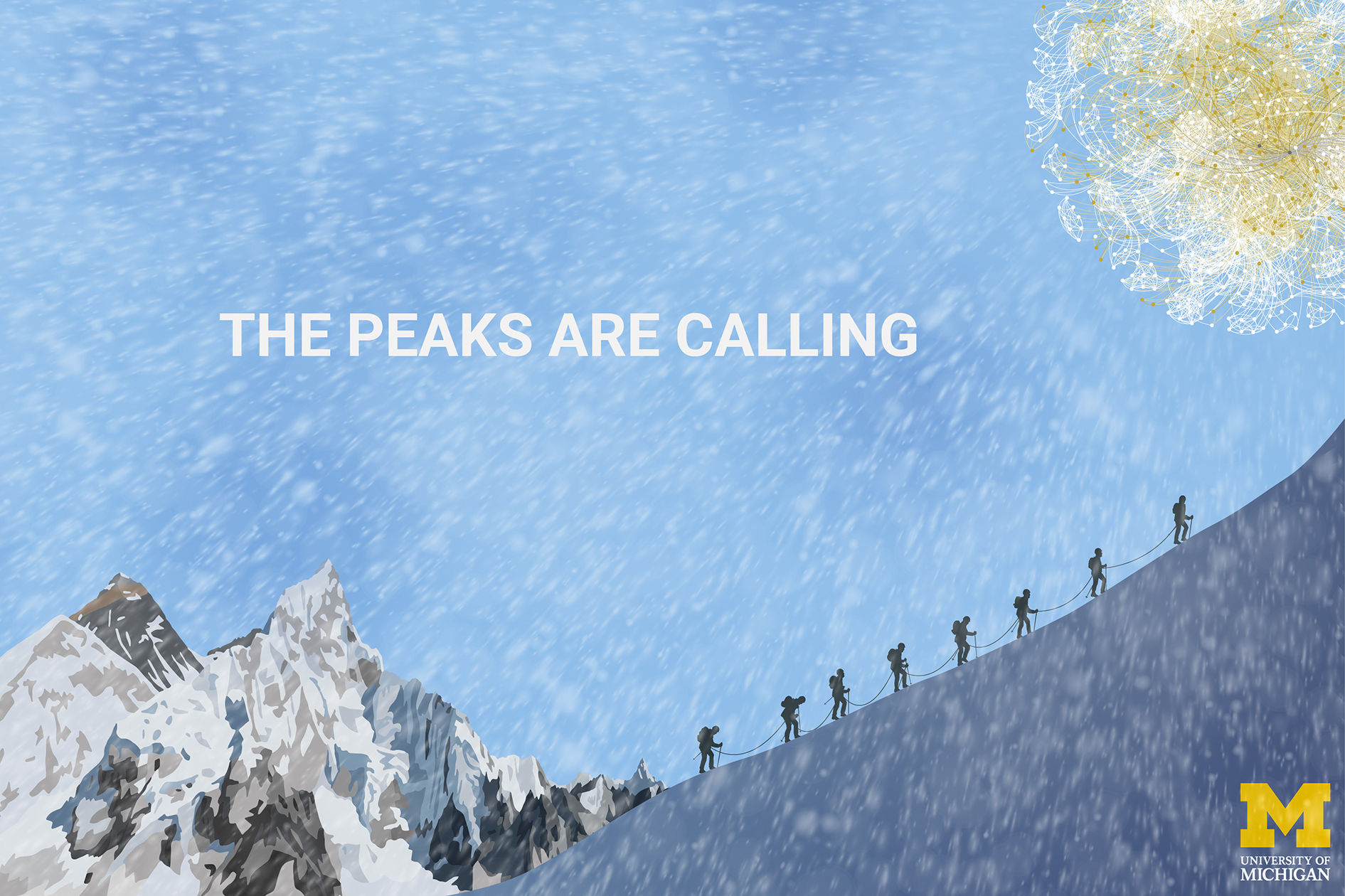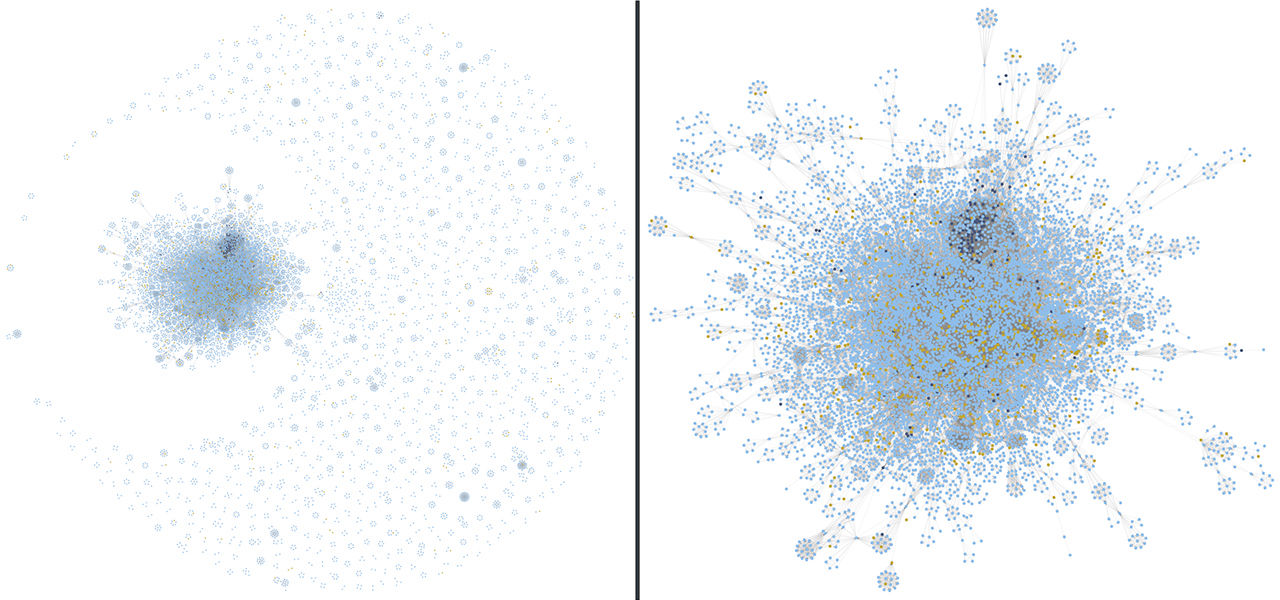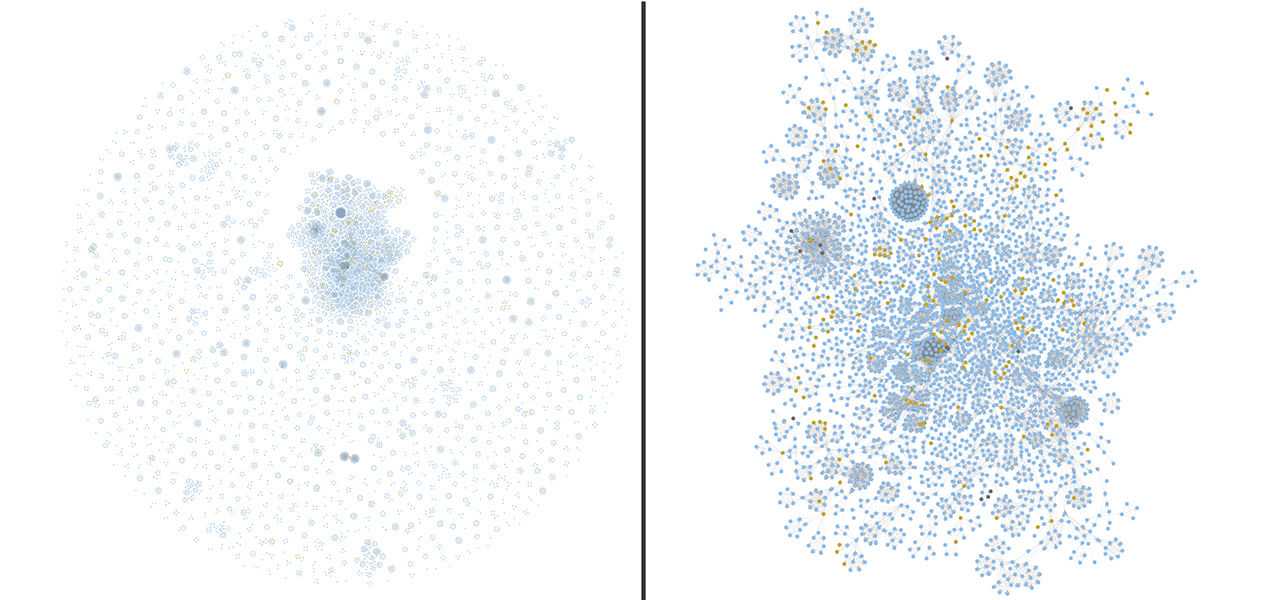The network of non-commercial expedition members is much more fragmented than the network of commercial expedition members, even lacking a real giant component. In the commercial network, there is a higher proportion of Sherpas (6.6% vs 5.5%) and Tibetans (1.5% vs 0.4%), and a higher proportion of Sherpas/Tibetans to Non-Sherpa/Tibetans relationships. The conductance* of the Non-Sherpa/Tibetan community is also higher in the commercial expedition members (0.17 vs 0.06). The lower the conductance score the more well-knit the community is but the more isolated it is from the rest of the network. These data seem to show that members of commercial expeditions have more interactions with Sherpas and Tibetans, while members of non-commercial expeditions are more fragmented into small and closed communities with proportionally less interactions with Sherpas and even less with Tibetans.
We see however that the conductance of the Sherpa/Tibetan community is lower for the commercial expedition members (0.67 vs 0.87). This partly contradicts the hypothesis made above, as it would suggest that the Sherpa/Tibetan community is more well-knit and more isolated in the commercial network. We suspect that, as the proportion of Sherpas and Tibetans is higher in the commercial network, they tend to form more of a community of their own, especially if they work together repeatedly on commercial expeditions. The intuition would want that community to be thus less diffused into the community of Non-Sherpa/Tibetans.
There is also a slightly higher proportion of members of commercial expeditions who climb in only 1 expedition (73.13% vs 68.79%). This just very slightly supports the hypothesis that commercial expedition members “do not repeatedly climb and interact”. But we question the significance of this difference between the two communities.
* (the ratio of relationships pointing outside the community to the total number of relationships of the community)






